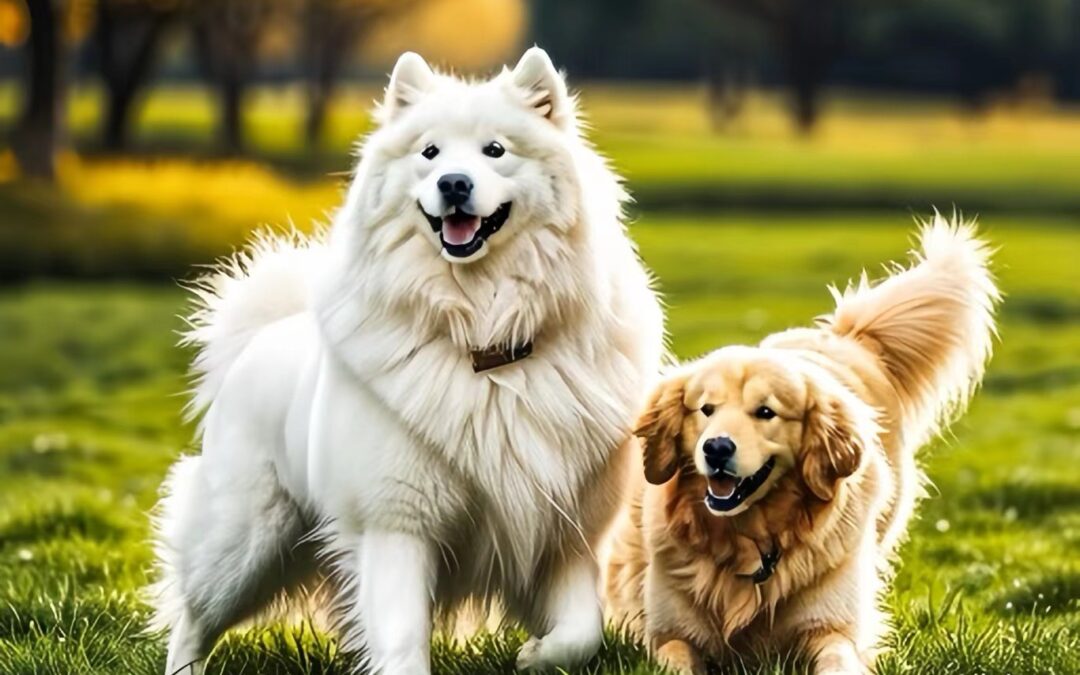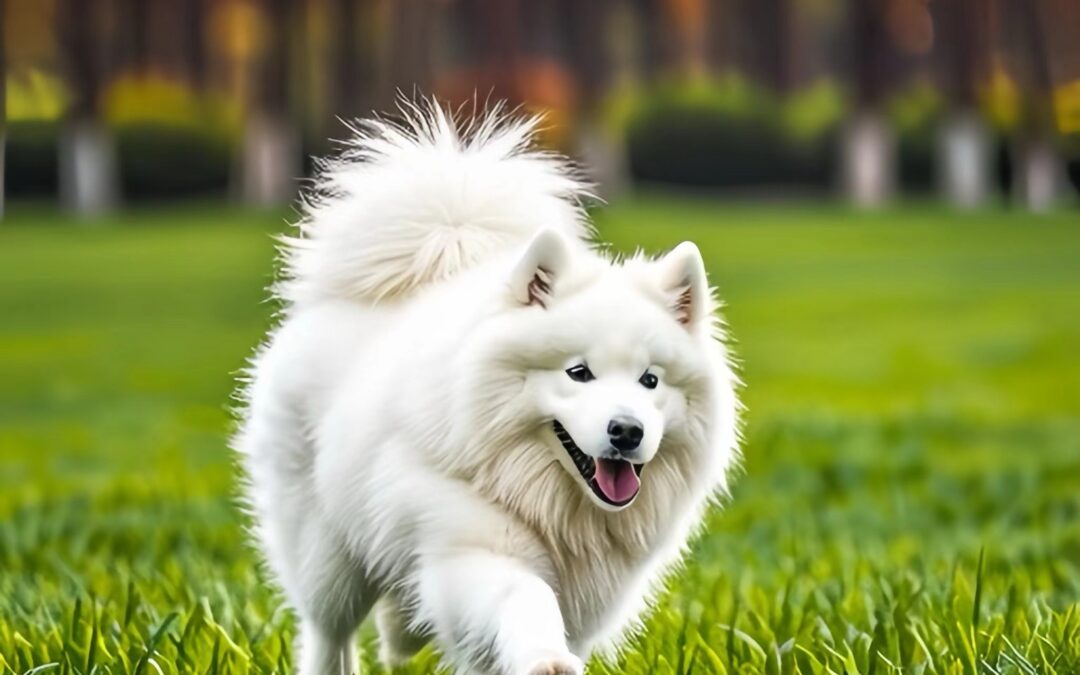
utworzone przez TCMVET | cze 9, 2024 | Chińska medycyna ziołowa dla zwierząt domowych
W ostatnich latach tradycyjna medycyna chińska (TCM) zyskała popularność nie tylko ze względu na zdrowie ludzkie, ale także ze względu na dobre samopoczucie naszych futrzanych przyjaciół. TCM oferuje holistyczne podejście do zdrowia psów, koncentrując się na równowadze i harmonii w organizmie. W tym artykule omówimy wyjątkowe korzyści TCM dla psów, badając różne metody leczenia i ich zastosowanie w nowoczesnej opiece weterynaryjnej.
Zrozumienie tradycyjnej medycyny chińskiej dla psów
Tradycyjna medycyna chińska to starożytny system opieki zdrowotnej praktykowany od tysięcy lat. Obejmuje różne metody, takie jak akupunktura, ziołolecznictwo i terapia dietetyczna, a wszystkie mają na celu przywrócenie równowagi energii życiowej organizmu, czyli „Qi”.
Korzyści z TCM dla psów
- Naturalne uzdrowienie: TCM wykorzystuje naturalne zioła i zabiegi, dzięki czemu jest delikatną i skuteczną opcją dla psów. W przeciwieństwie do niektórych konwencjonalnych leków, TCM zazwyczaj ma mniej skutków ubocznych i można ją dostosować do specyficznych potrzeb każdego psa.
- Podejście holistyczne: Praktycy TCM postrzegają ciało jako wzajemnie połączony system. Celem leczenia jest wyeliminowanie pierwotnych przyczyn problemów zdrowotnych, a nie tylko łagodzenie objawów. To całościowe podejście może prowadzić do bardziej kompleksowej i trwałej poprawy stanu zdrowia.
- Opieka profilaktyczna: Jedną z podstawowych zasad TCM jest zapobieganie. Regularne zabiegi TCM mogą pomóc w utrzymaniu ogólnego stanu zdrowia psa, zwiększeniu odporności, poprawie trawienia i zwiększeniu witalności.
- Zarządzanie bólem: Akupunktura i leki ziołowe są szczególnie skuteczne w leczeniu bólu, szczególnie w przypadku schorzeń takich jak zapalenie stawów, dysplazja stawu biodrowego i rekonwalescencja pooperacyjna. Zabiegi te mogą zapewnić ulgę i poprawić jakość życia starszych psów lub psów z chorobami przewlekłymi.
Typowe metody leczenia TCM dla psów
- Akupunktura: Akupunktura polega na wkłuwaniu cienkich igieł w określone punkty na ciele w celu pobudzenia gojenia i łagodzenia bólu. Można go stosować w leczeniu różnych schorzeń, w tym problemów układu mięśniowo-szkieletowego, zaburzeń neurologicznych i problemów trawiennych.
- Medycyna ziołowa: Ziołowe formuły TCM są dostosowane do indywidualnej budowy ciała i potrzeb zdrowotnych każdego psa. Do powszechnie stosowanych ziół należą traganek wzmacniający układ odpornościowy, lukrecja ze względu na właściwości przeciwzapalne i kurkuma ze względu na właściwości przeciwutleniające.
- Terapia dietetyczna: Dieta odgrywa kluczową rolę w TCM. Pokarmy wybierane są na podstawie ich właściwości energetycznych i zdolności do równoważenia Qi organizmu. Na przykład produkty chłodzące, takie jak ogórek, mogą pomóc zmniejszyć stan zapalny, a produkty rozgrzewające, takie jak imbir, mogą poprawić krążenie.
- Masaż Tui Na: Tui Na to forma chińskiego masażu leczniczego, która pomaga stymulować punkty akupunkturowe, poprawiać krążenie i sprzyjać relaksowi. Może być szczególnie korzystny dla psów cierpiących na stany lękowe, problemy ze stawami lub napięcie mięśni.
Integracja TCM z konwencjonalną opieką weterynaryjną
TCM może uzupełniać konwencjonalne leczenie weterynaryjne, zapewniając bardziej kompleksowe podejście do zdrowia Twojego psa. Wielu lekarzy weterynarii dostrzega obecnie korzyści medycyny integracyjnej, łączącej to, co najlepsze z obu światów, w celu poprawy wyników leczenia.
Wnioski
Tradycyjna medycyna chińska oferuje unikalne i skuteczne podejście do zdrowia psów, kładąc nacisk na naturalne leczenie, holistyczną opiekę i profilaktykę. Włączając TCM do rutynowej opieki zdrowotnej Twojego psa, możesz zapewnić swojemu futrzanemu przyjacielowi zrównoważone i pełne życia życie. Niezależnie od tego, czy chodzi o akupunkturę, ziołolecznictwo, zmianę diety czy masaż terapeutyczny, TCM zapewnia cenne narzędzia wspierające dobre samopoczucie Twojego psa w naturalny i harmonijny sposób.

utworzone przez TCMVET | cze 9, 2024 | Rak i guzy u psów
Rak żołądka u psów to przerażająca diagnoza dla każdego właściciela zwierzęcia. Chociaż jest to stosunkowo rzadkie, jego wpływ może być głęboki. Zrozumienie przyczyn raka żołądka u psów i sposobów zapobiegania mu ma kluczowe znaczenie dla każdego rodzica zwierzęcia. W tym artykule przyjrzymy się mniej znanym przyczynom raka żołądka u psów i przedstawimy praktyczne wskazówki dotyczące zapobiegania.
Co to jest rak żołądka u psów?
Rak żołądka, znany również jako rak żołądka, jest nowotworem złośliwym, który rozwija się w wyściółce żołądka psa. Najczęstszym typem raka żołądka u psów jest gruczolakorak, ale mogą również wystąpić inne typy, takie jak mięśniakomięsak gładkokomórkowy, chłoniak i guzy z komórek tucznych.
Zaskakujące przyczyny raka żołądka u psów
- Genetic Predisposition: Niektóre rasy psów są bardziej podatne na raka żołądka ze względu na czynniki genetyczne. Rasy takie jak owczarek belgijski, collie i Staffordshire Bull Terrier częściej chorują na raka żołądka.
- Dieta i odżywianie: Zła dieta, uboga w niezbędne składniki odżywcze, może przyczynić się do rozwoju raka żołądka. Karmienie psa niską jakością, wysoko przetworzoną karmą ze sztucznymi dodatkami i konserwantami może zwiększać ryzyko.
- Czynniki środowiskowe: Narażenie na niektóre toksyny środowiskowe, takie jak pestycydy, herbicydy i chemikalia przemysłowe, może zwiększyć prawdopodobieństwo zachorowania na raka żołądka u psa. Szczególnie zagrożone są psy żyjące na obszarach o wysokim poziomie zanieczyszczenia.
- Zakażenie Helicobacter: Przewlekłe zakażenie bakterią Helicobacter pylori powiązano z rozwojem raka żołądka zarówno u ludzi, jak i u psów. Bakteria ta może powodować długotrwały stan zapalny i uszkodzenie błony śluzowej żołądka, co prowadzi do raka.
- Wiek i warunki zdrowotne: Starsze psy i psy z istniejącymi wcześniej schorzeniami, takimi jak przewlekłe zapalenie błony śluzowej żołądka lub choroba zapalna jelit (IBD), są bardziej podatne na rozwój raka żołądka. Długotrwały stan zapalny i podrażnienie może prowadzić do zmian złośliwych w błonie śluzowej żołądka.
Wskazówki profilaktyczne dla właścicieli psów
- Zapewnij zbilansowaną dietę: Upewnij się, że Twój pies otrzymuje dobrze zbilansowaną dietę, bogatą w wysokiej jakości białka, zdrowe tłuszcze oraz niezbędne witaminy i minerały. Unikaj żywności zawierającej sztuczne dodatki, konserwanty i o niskiej wartości odżywczej.
- Regularne kontrole weterynaryjne: Regularne kontrole weterynaryjne są niezbędne do wczesnego wykrycia wszelkich problemów zdrowotnych. Twój weterynarz może przeprowadzić rutynowe badania i zalecić środki zapobiegawcze w zależności od konkretnych potrzeb Twojego psa.
- Minimalizuj narażenie na toksyny: Zmniejsz narażenie psa na toksyny środowiskowe, unikając stosowania szkodliwych substancji chemicznych w domu i ogrodzie. Jeśli to możliwe, wybieraj naturalne i bezpieczne dla zwierząt alternatywy.
- Utrzymuj zdrową wagę: Otyłość może zwiększać ryzyko różnych nowotworów, w tym raka żołądka. Zapewnij swojemu psu prawidłową wagę dzięki zbilansowanej diecie i regularnym ćwiczeniom.
- Monitoruj objawy: Należy zachować czujność w przypadku jakichkolwiek objawów raka żołądka, takich jak wymioty, utrata apetytu, utrata masy ciała, ból brzucha i krew w wymiocinach lub stolcu. Wczesne wykrycie może znacznie zwiększyć szanse na skuteczne leczenie.
Wnioski
Chociaż rak żołądka u psów jest poważnym i potencjalnie zagrażającym życiu schorzeniem, zrozumienie zaskakujących przyczyn i wdrożenie środków zapobiegawczych może pomóc zmniejszyć ryzyko. Zapewniając zdrową dietę, regularną opiekę weterynaryjną i środowisko wolne od toksyn, możesz przyczynić się do ogólnego dobrego samopoczucia i długowieczności swojego psa.

utworzone przez TCMVET | cze 7, 2024 | Rak i guzy u psów
Soft tissue sarcoma in dogs represents a diverse group of cancers that arise from the connective tissues of the body. These can include fat, muscle, nerves, fibrous tissues, and the pericytes of small blood vessels. This article will explore the symptoms, diagnosis, and the range of treatment options available, encompassing both conventional and holistic approaches.
Zrozumienie mięsaka tkanek miękkich u psów
Soft tissue sarcomas (STS) are relatively uncommon in dogs, yet they are significant due to their aggressive nature. They typically manifest as a single lump or mass on a dog’s body, which can grow rapidly. These tumors can occur anywhere but are most often found on the limbs, trunk, and head.
Symptoms of Soft Tissue Sarcoma
The symptoms of soft tissue sarcoma in dogs are often subtle initially. The most common sign is the presence of a non-painful mass. As the tumor grows, it may become more noticeable and can cause discomfort or interfere with the dog’s normal activities, depending on its location.
Diagnosis of Soft Tissue Sarcoma
Diagnosis starts with a thorough physical examination followed by diagnostic imaging like X-rays or an MRI to determine the size and extent of the tumor. A definitive diagnosis is typically achieved through a biopsy, where a small sample of the tumor is examined microscopically.
Conventional Treatments for Soft Tissue Sarcoma
Usuwanie chirurgiczne
Surgery is often the first line of treatment for soft tissue sarcoma. The goal is to remove the tumor along with some surrounding healthy tissue to ensure all cancerous cells are eliminated.
Radioterapia
Radiation is generally recommended if surgical margins are narrow, meaning there might be some residual cancer cells. It helps to control the spread and improve the quality of life.
Chemioterapia
Chemotherapy may be considered in cases where the sarcoma is known to be high grade or has metastasized (spread to other areas of the body).
Holistic and Supportive Treatments
Dieta i odżywianie
A balanced diet rich in nutrients can help support a dog’s immune system. Supplements such as fish oil, turmeric, and antioxidants may be recommended to support overall health.
Ziołowe środki zaradcze
Holistic practitioners might suggest herbs that support health and well-being. For example, Turkey Tail mushroom is known for its potential anti-cancer properties and may be used in conjunction with conventional treatments.
Fizykoterapia
For dogs recovering from surgery or those affected by tumors on the limbs, physical therapy can help maintain muscle strength and mobility.
The Role of Regular Veterinary Care
Regular check-ups are crucial for early detection and management of any potential recurrence. Follow-up visits often involve physical exams and repeat imaging to monitor for new tumor growth.
Wnioski
Managing soft tissue sarcoma in dogs requires a comprehensive approach that combines the precision of conventional medicine with the supportive benefits of holistic care. By understanding the options available, pet owners can make informed decisions about their dogs’ health, aiming not just for survival but for a good quality of life.

utworzone przez TCMVET | cze 7, 2024 | Rak i guzy u psów
Ovarian cancer in dogs, though rare, is a serious condition that requires attention. Early detection can greatly improve the prognosis and quality of life for affected dogs. In this article, we’ll explore the causes and early signs of ovarian cancer in dogs, providing valuable information to help you recognize and address this condition promptly.
Causes of Ovarian Cancer in Dogs
Czynniki genetyczne
Genetics play a significant role in the development of ovarian cancer in dogs. Certain breeds are more prone to cancer due to inherited genetic mutations. Breeds such as Golden Retrievers, Boxers, and German Shepherds have shown higher incidences of various cancers, including ovarian cancer.
Hormonal Imbalances
Hormonal imbalances can contribute to ovarian cancer in dogs. Unspayed female dogs are at a higher risk due to prolonged exposure to estrogen. Spaying your dog can significantly reduce the risk by eliminating the primary source of estrogen.
Wiek
Older dogs are more commonly diagnosed with ovarian cancer. As dogs age, their cells are more likely to undergo mutations that can lead to cancer. Regular veterinary check-ups are crucial for early detection, especially as your dog gets older.
Environmental Exposure
Exposure to environmental toxins and carcinogens can increase the risk of ovarian cancer in dogs. This includes exposure to secondhand smoke, pesticides, and industrial chemicals. Keeping your dog’s environment clean and minimizing exposure to harmful substances can help reduce this risk.
Early Signs of Ovarian Cancer in Dogs
Recognizing the early signs of ovarian cancer in dogs is essential for timely intervention. Here are some common symptoms to watch for:
Abdominal Swelling
One of the most noticeable early signs of ovarian cancer in dogs is abdominal swelling. This can result from the tumor itself or from fluid accumulation in the abdomen (ascites). If your dog’s abdomen appears unusually enlarged, seek veterinary care immediately.
Lethargy and Weakness
Dogs with ovarian cancer often exhibit lethargy and weakness. They may become less active, sleep more than usual, and lose interest in their favorite activities. This change in behavior can be subtle but is significant.
Utrata wagi
Unexplained weight loss is another early sign of ovarian cancer in dogs. Despite having a normal or increased appetite, affected dogs may lose weight due to metabolic changes caused by the cancer.
Changes in Appetite
Changes in appetite, including both increased and decreased eating habits, can indicate ovarian cancer. Some dogs may refuse food altogether, while others may seem hungrier than usual but still lose weight.
Vomiting and Diarrhea
Gastrointestinal issues such as vomiting and diarrhea are common in dogs with ovarian cancer. These symptoms can be intermittent or persistent and are often accompanied by other signs of illness.
Abnormal Vaginal Discharge
In female dogs, abnormal vaginal discharge can be an early sign of ovarian cancer. This discharge may be bloody or pus-like and can occur regardless of the dog’s reproductive status.
Zmiany behawioralne
Behavioral changes, such as increased irritability or depression, can also be early indicators of ovarian cancer in dogs. These changes often result from the discomfort and pain caused by the tumor.
Wnioski
Understanding the causes and early signs of ovarian cancer in dogs is essential for pet owners. Early detection and intervention can make a significant difference in the outcome for affected dogs. If you notice any of the symptoms mentioned above, consult your veterinarian for a thorough examination and appropriate diagnostic tests.
By staying informed and vigilant, you can help ensure your dog receives the best possible care and maintain their quality of life. Remember, regular veterinary check-ups and preventive measures, such as spaying, play a vital role in safeguarding your dog’s health against ovarian cancer.
For more information on dog health and holistic treatments, visit our blog at TCMVET, where we provide cutting-edge research and insights into natural supplements and cancer care for pets.

utworzone przez TCMVET | cze 7, 2024 | Rak i guzy u psów
As a pet owner, discovering a sudden lump under your dog’s skin can be alarming. These unexpected growths can vary in size, shape, and texture, and while some may be harmless, others can indicate serious health issues. This article will guide you through understanding the potential causes of sudden lumps, the importance of early detection, and the treatment options available.
Common Causes of Sudden Lumps in Dogs
- Tłuszczaki: These are benign fatty tumors commonly found in older dogs. They are generally soft, movable, and painless.
- Cysts: These fluid-filled sacs can form due to blocked hair follicles or oil glands. They may rupture and need medical attention.
- Ropnie: Infections can lead to abscesses, which are painful, pus-filled lumps often caused by bites, scratches, or wounds.
- Hematomas: These are blood-filled swellings resulting from trauma or injury, often seen in the ears or other areas prone to bruising.
- Guzy komórek tucznych: These cancerous lumps can appear suddenly and grow quickly. They require immediate veterinary assessment and treatment.
- Sebaceous Adenomas: These are benign tumors arising from sebaceous glands, often appearing as wart-like lumps on the skin.
Znaczenie wczesnego wykrywania
Early detection of lumps in dogs is crucial for several reasons:
- Preventing Complications: Identifying lumps early can prevent them from growing or causing other health issues.
- Determining Malignancy: Early diagnosis helps determine if a lump is benign or malignant, allowing for prompt treatment if needed.
- Improving Prognosis: Timely intervention can improve the prognosis for dogs with cancerous lumps, increasing the chances of successful treatment.
Steps to Take if You Discover a Lump
- Observe the Lump: Note the size, shape, texture, and any changes over time. Keep track of any other symptoms your dog may exhibit, such as lethargy, loss of appetite, or changes in behavior.
- Consult Your Veterinarian: Schedule an appointment with your vet to have the lump examined. Your vet may perform a fine needle aspiration (FNA) or biopsy to determine the nature of the lump.
- Follow Through with Recommended Tests: Depending on the initial findings, additional tests such as blood work, X-rays, or ultrasound may be necessary to get a complete picture of your dog’s health.
Treatment Options for Sudden Lumps
The treatment for lumps in dogs varies depending on the underlying cause:
- Usuwanie chirurgiczne: Benign and malignant tumors may require surgical excision. In some cases, this is curative, while in others, it may be part of a broader treatment plan.
- Leki: Antibiotics or anti-inflammatory medications may be prescribed for infections or abscesses. For some tumors, chemotherapy or radiation therapy might be recommended.
- Holistic and Natural Treatments: Supplements like TCMVET Baituxiao and Turkey Tail mushrooms have shown promise in managing tumors naturally and supporting overall pet health. Always consult your vet before starting any new treatment regimen.
Preventive Measures and Monitoring
- Regularne badania kontrolne: Schedule regular veterinary check-ups to monitor your dog’s health and catch any potential issues early.
- Healthy Diet and Exercise: Maintain a balanced diet and regular exercise routine for your dog to support their overall health and immune system.
- Regular Grooming and Inspections: Regular grooming and skin inspections can help you notice any new lumps or changes in your dog’s skin condition.
Wnioski
While discovering a sudden lump under your dog’s skin can be concerning, understanding the potential causes and seeking prompt veterinary advice can make a significant difference in your pet’s health. Early detection and appropriate treatment are key to managing these lumps effectively. Remember to stay vigilant, consult your vet, and explore all treatment options, including natural supplements, to ensure the best care for your furry friend.
Tags: Dog Health, Sudden Lumps in Dogs, Lipomas in Dogs, Canine Cysts, Dog Abscess Treatment, Mast Cell Tumors in Dogs, Veterinary Oncology, Holistic Treatments for Dogs, Natural Supplements for Dogs, TCMVET Baituxiao, Turkey Tail Mushrooms for Dogs.





